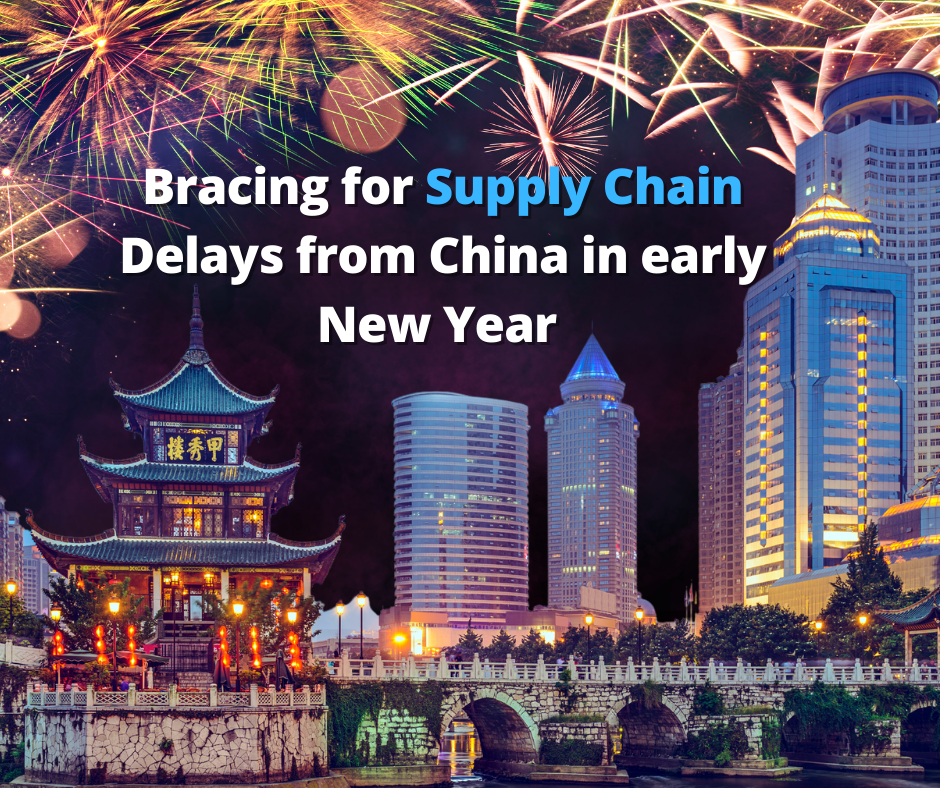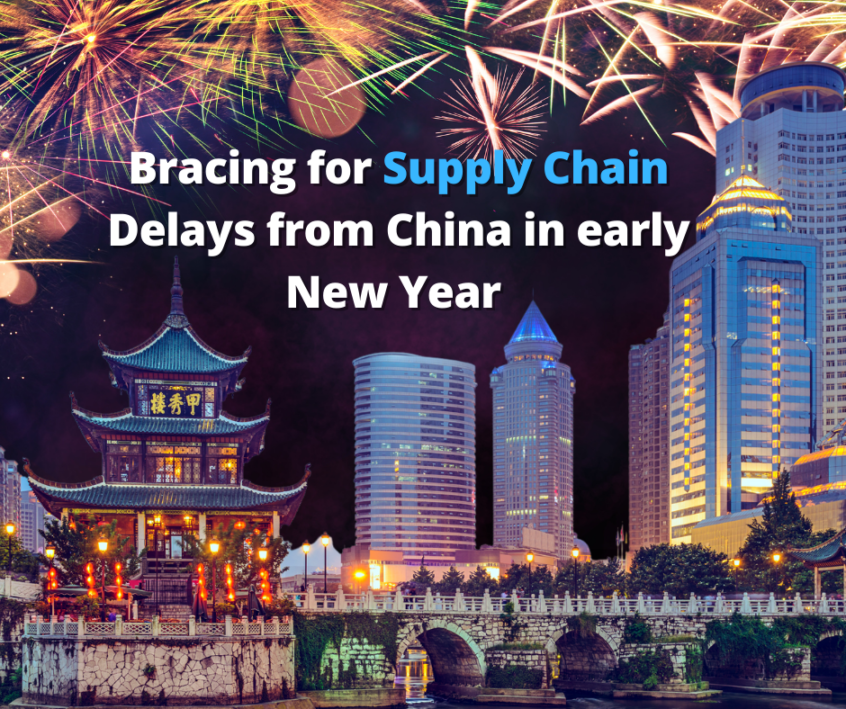
Impact on industry and international trade
The logistics industry is dealing with yet another challenging obstacle from the new Covid-19 infections that recently hit China. China has locked down a major transportation hub in the south, as the country grapples with its largest nationwide Covid outbreak. The lockdown also follows rising cases in Beijing, which reported the country’s first Covid deaths in nearly six months. Despite this, Chinese factories are expected to shut down two weeks earlier than usual for the Chinese Lunar New Year — Chinese New Year’s Eve falls on Jan. 21 next year. The seven days after the holiday are considered a national holiday.
Testing requirements have been heightened
The affected localities are implementing new recruitment for evidence of a negative result from two nucleic acid testing protocols. This occurred within three days based on the “dynamic zero-COVID” that the Chinese recently implemented as a step-up from the “Zero COVID” policy that caused many logistical headaches. The policy’s rationale is that any outbreak should be stopped as soon as it appears before it becomes a pandemic.
China has not yet completely emerged from its critical Covid crisis. However, because of previous experiences, experts predict negative consequences for drayage patterns. This implies a significant slowing of deliveries. Indeed, such effects will likely affect logistical planning in both the finished goods and raw materials segments.
Disrupting the supply lines
Some argue that it will only be a matter of time before manufacturing is affected and the effects spill over into international trade. Akhil Nair of Seko Logistics emphasizes that trucking remains one of the most important aspects of the current supply chain. The logistical setup in China means that cargo is highly integrated. For example, finished products and raw materials transit into various localities before getting to a seaport. Lockdowns immediately impact trucking, which is the lifeblood of these transitions. Congestion and delays are virtually inevitable under the new Covid policy.
The effects were devastating when Shanghai and Guangdong were subjected to the “zero COVID” in the recent past. Now that the outbreak has hit Beijingn, a first for the Chinese capital since the beginning of the pandemic and surrounding localities, the impact will likely be even greater. When drayage slows, there is a ripple effect across the chain, starting with the delivery of materials before extending to the delivery of finished goods. SONAR’s chart is already showing that delays are kicking in and that current predictions are that it will get worse.
Are there any signs of hope or relief for the logistics industry?
Some experts see some relief from the fact that there has been some decrease in future manufacturing orders. These decreases range from 20-40% on certain items like furniture and appliances. According to the Ocean Booking Volume Index, this is trickling down to ocean orders and, therefore, international trade. The Shanghai lockdown was very impactful, but it is not clear that everyone in the logistics industry is yet well versed with the implications of the new outbreak and the responses from the Chinese authorities.
Guangdong is particularly vulnerable and critical for the global supply chain. This is because this city accounts for nearly a third of all China’s exports. Indeed, Guangdong handles about 30% of the global production of items such as toys, textiles, and shoes. We are talking about circa $300 worth of goods. The area hosts some of the largest companies in China including Midea, BYD, Huawei Technologies, and Tencent Holding.
A testing mechanism under pressure
The last time there was news about the “closed system” of testing was not good. The last round of lockdowns and testing had not been as effective as anticipated. Nevertheless, Chinese manufacturing remains optimistic. For example, Honda Motor recently announced a new electric vehicle factory. This would be a joint venture with Guangzhou Automobile Group. These plants all need effective logistics, and that won’t happen in the current climate.
Additionally, it has been reported that certain commodities, including steel, are under pressure. A case in point is Wuyang Iron & Steel Company which is in Henan Province. The company specializes in wide and thick steel plate production but was disrupted for several days during the latest Covid crisis. This is an important company whose output reaches many countries, including Japan and the USA. Supply chain managers must learn to account for these disruptions in their timelines.
Planning for eventualities and worst-case scenarios
There are also local access obstacles for cross-province and cross-city transportation, mostly related to truck driver testing requirements. For example, when a locality has an outbreak, it is placed in lockdown. Drivers from and passing through that area must have a PCR or nucleic acid test to confirm their negative status before doing any work. That test can take between one and three days to return a result. The implication is that even those who are negative must wait for at least four days before reporting.
Things become even more complicated for those who test positive while on the job. Any positive test will stop truckers from moving forward or backward. Hence, the logistics managers must quickly find an alternative to deliver the cargo. Along the way, multiple tests may be undergone before proceeding. Even if all of them turn out negative, the delays are inevitable. The situation has been made even worse by the layering of districts.
There are instances where a lockdown and high incident rate occur in one place, such as in Shanghai. The surrounding districts will no longer wish to accept drivers from the affected area. The implication is that the economies of scale that would normally arise from the optimization of truck fleets are lost. Indeed, the supply may find that they need more trucks to cover the gaps and deal with abandoned pickups.
Wrapping up
The new lockdowns in China and Lunar Year are placing pressure on the supply chain and creating a headache for logistics managers. The consequences are far-reaching, given recent history and the integrated nature of the trucking business in China. They are not only restricted to the domestic market but to other parts of the world such as the USA and Japan. Accepting this new normal means being flexible and nimble in supply chains.


